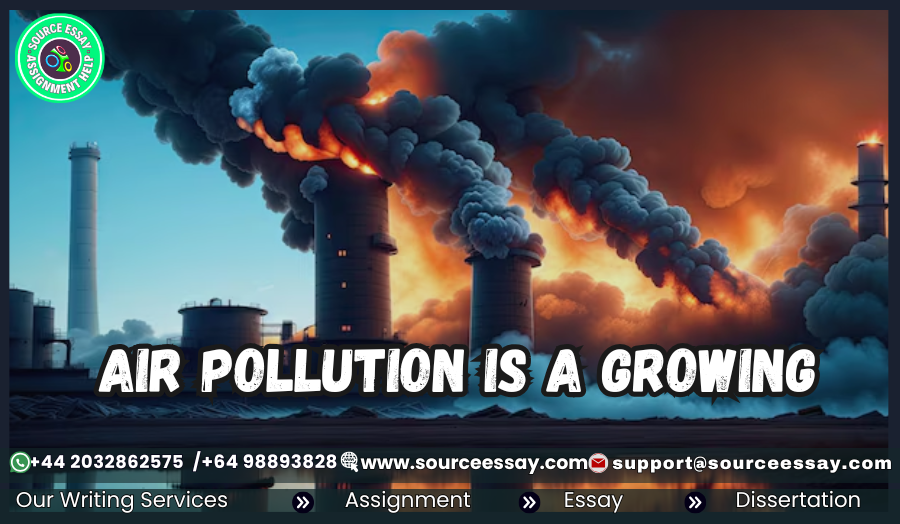World Health Organization guideline limits
Recently published data from the World Health Organization has given us a warning that 99% of the air we are breathing exceeds the World Health Organization guideline limits. It contains high levels of pollutants, and specifically, individuals who are residing in low and middle-income countries are suffering from this exposure compared to those who are wealthy(How Air Pollution Is Destroying Our Health, 2024).
The path of lung cancer….and more
Air pollutants that are commonly found outdoors have become a frequent phenomenon nowadays in both rural areas and cities. They cause particulate matter, which can lead us down the path of lung cancer, heart disease, stroke, and chronic respiratory diseases. It is not enough to address outdoor air pollution alone; moreover, more than 2.6 billion people are exposed to dangerous levels of household air pollution.
Commitment to fight the problem of air pollution
The major contributors to indoor pollution are open fires and simple stoves, which we utilize for Looking. They can be fueled by biomass, wood, animal dung, crop waste, coal, or kerosene.
We are moving towards a crucial commitment to fight the problem of air pollution. The World Health Organization partnered and covered the first Global Conference on Air Pollution and Health, which took place in Geneva from 29 October to 21 November 2018.
The substantial part of this conference was to raise awareness for this growing public health challenge. The organisation and all the collaborative partners share information and tools on the health risks of air pollution and how we can intervene to eradicate this concern.
Members from diverse backgrounds
The conference highlighted some of the best works done by the World Health Organization, specifically regarding air pollution. This includes the establishment of a global platform on air quality and health. This particular platform has members from diverse backgrounds, including civil society, UN agencies, and other partner institutes. They specifically review data on air quality and health.
Moving towards understanding air pollution is necessary. The presence of one or more contaminants in the atmosphere can be labeled as air pollution. It can be in the form of odor, smoke, vapor, fumes, dust, gas, or mist. It remains in the air for a duration and quantity that can be detrimental to human health.
Organs are impacted in our body
Humans can be exposed to air pollution, and their respiratory tract can be at risk. Breathing in these air pollutants can lead to various concerns such as immunosuppression, oxidative stress, inflammation, and metallicity in cells. It will eventually impact the brain, heart, lungs, and other crucial organs in the human body, leading to various diseases.
The next question can highlight what organs are impacted in our body due to air pollution, as we have talked about earlier well, some of the air pollutants are way too small in size and can even penetrate our bloodstream by the lungs and circulate throughout our body, leading to systematic information and carcinogenic in body.
The specific diseases
Air pollution and its exposure can lead to mortality and various diseases. If we highlight the specific diseases, it is strongly linked to, they include ischemic heart disease, stroke, chronic obstructive pulmonary disease, lung cancer, cataracts, and pneumonia, which are major health issues caused by air pollution.
There is suggestive evidence also linked to air press pollution exposure, and it can hurt pregnancy outcomes such as small gastral age and low birth weight. Other than that, diabetes, cancer, cognitive impairment, and neurological diseases are also seen.
Adverse impact on health
We cannot deny the fact that toxins are there in air pollution which can have an adverse impact on health. The pollutants that have the strongest evidence to have a massive concern for public health are particulate matter, Ozone, carbon monoxide, Nitrogen dioxide, and Sulphur dioxide. Particulate matter is an important source of adverse health. They are very minute and can penetrate deep into your lungs and bloodstream. They can travel through various organs causing systemic damage to tissues and cells (Health Impacts, n.d.).
The question we need to raise here is how long exposure to air pollution can harm you. Taking the case of children and adults, short and long-term exposure to air pollutants may cause various health concerns. The level and duration of exposure that is considered safe vary according to the pollutants. As we have discussed, there are various kinds of pollutants in the air, and they are also related to different diseases.
online dissertation assignment help , diploma & certification courses UK , management assignment help UK

